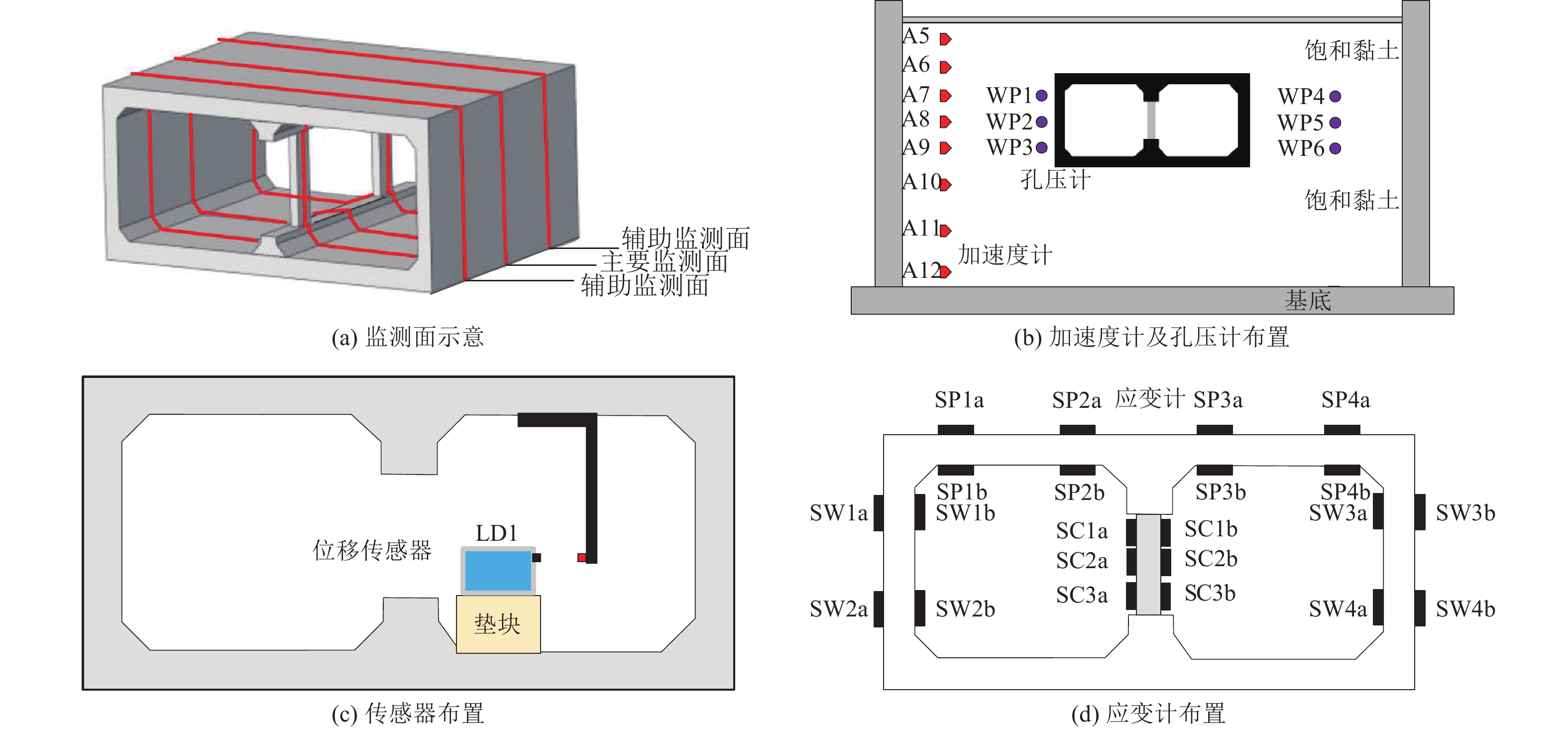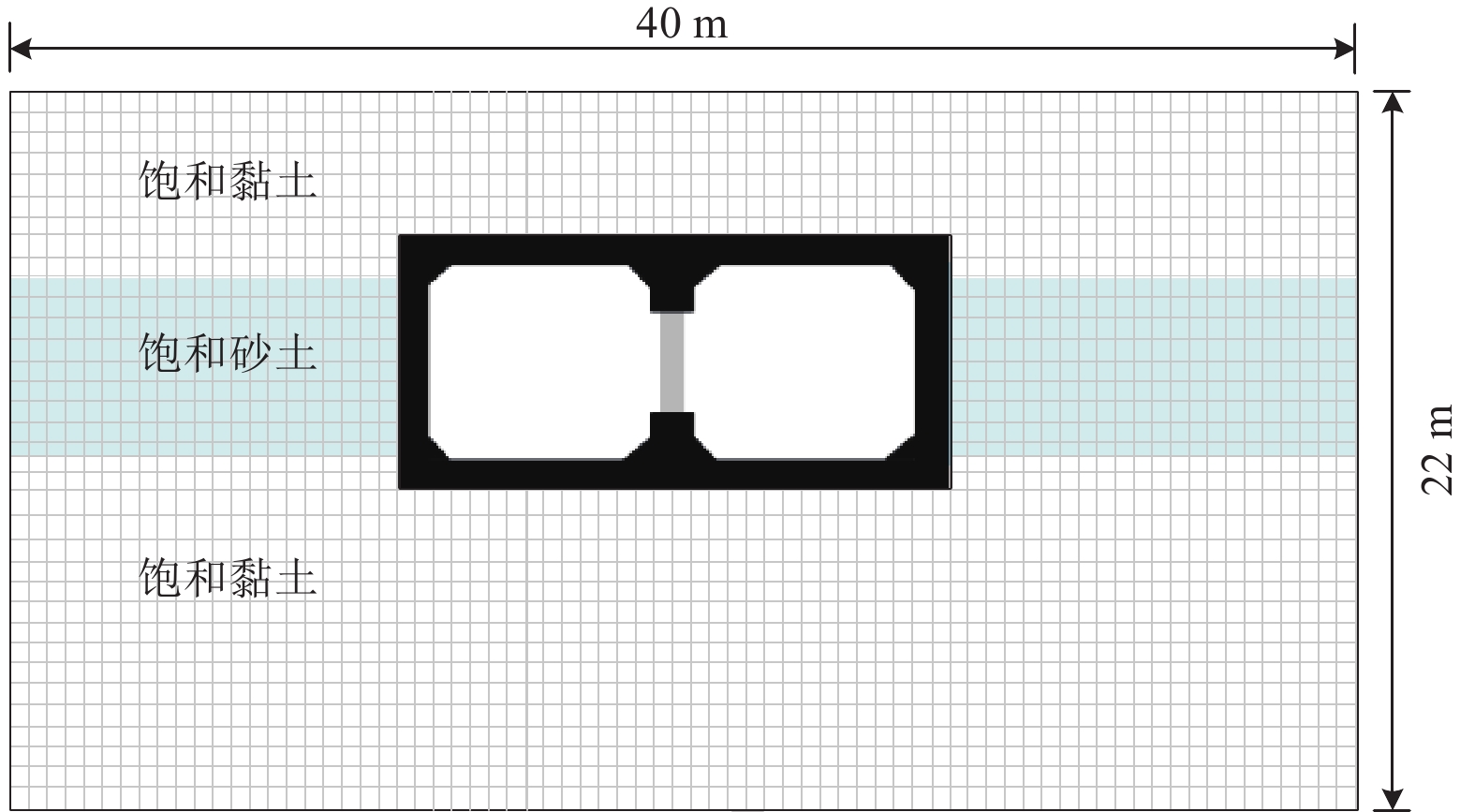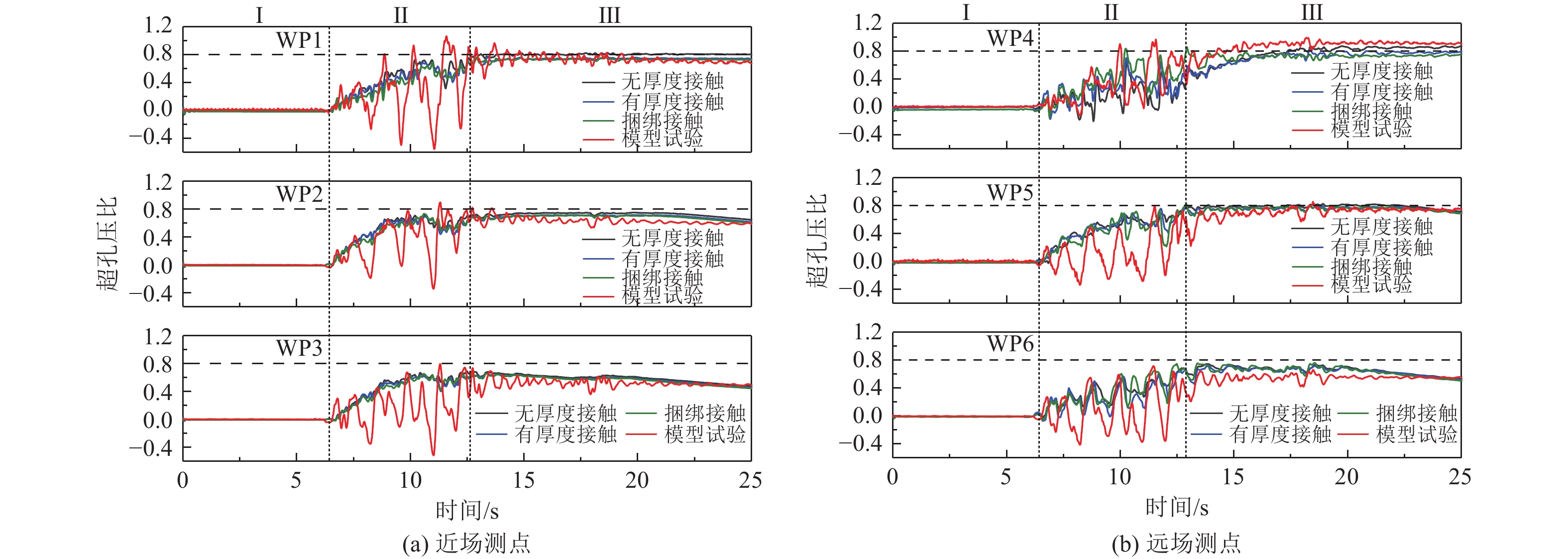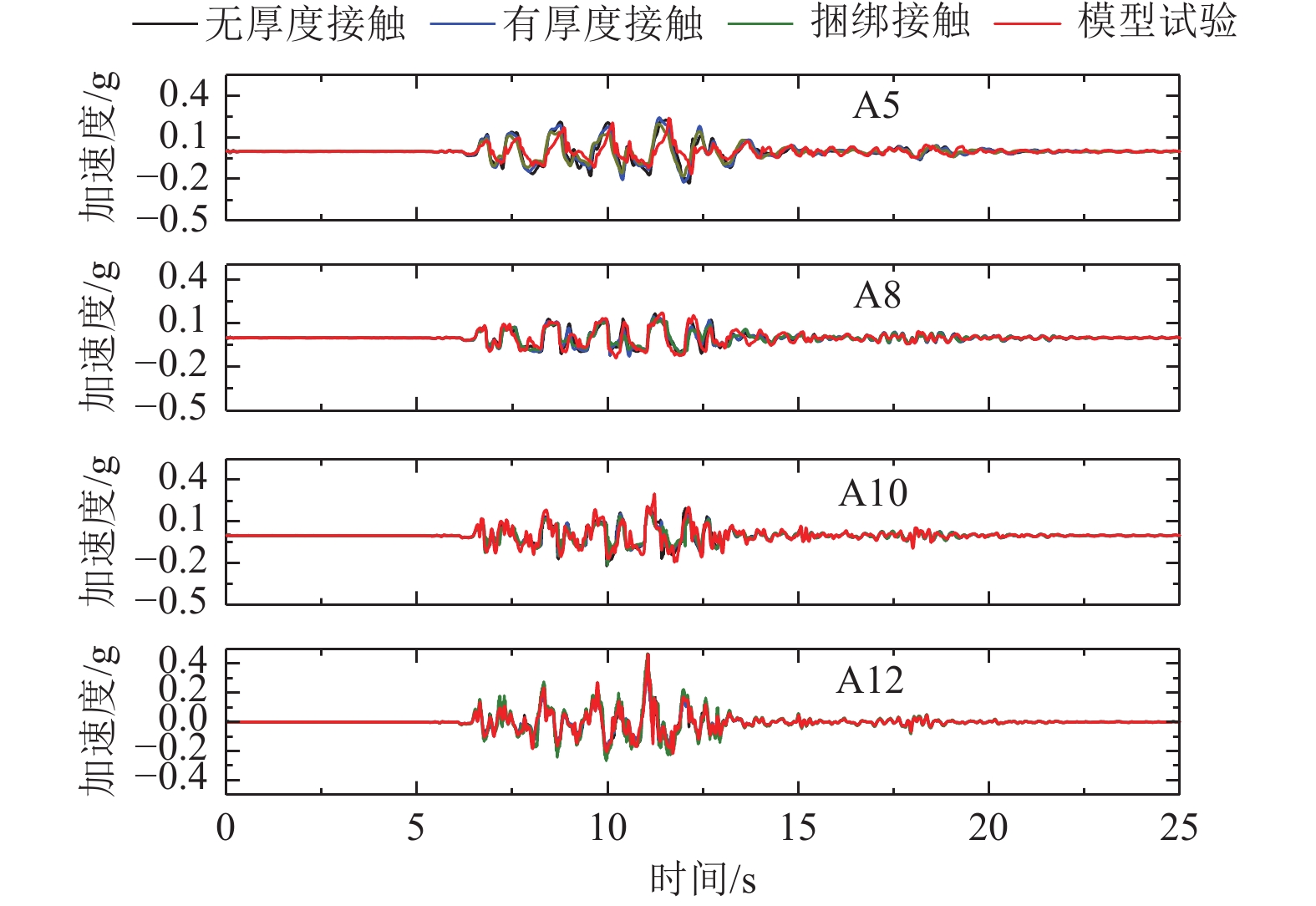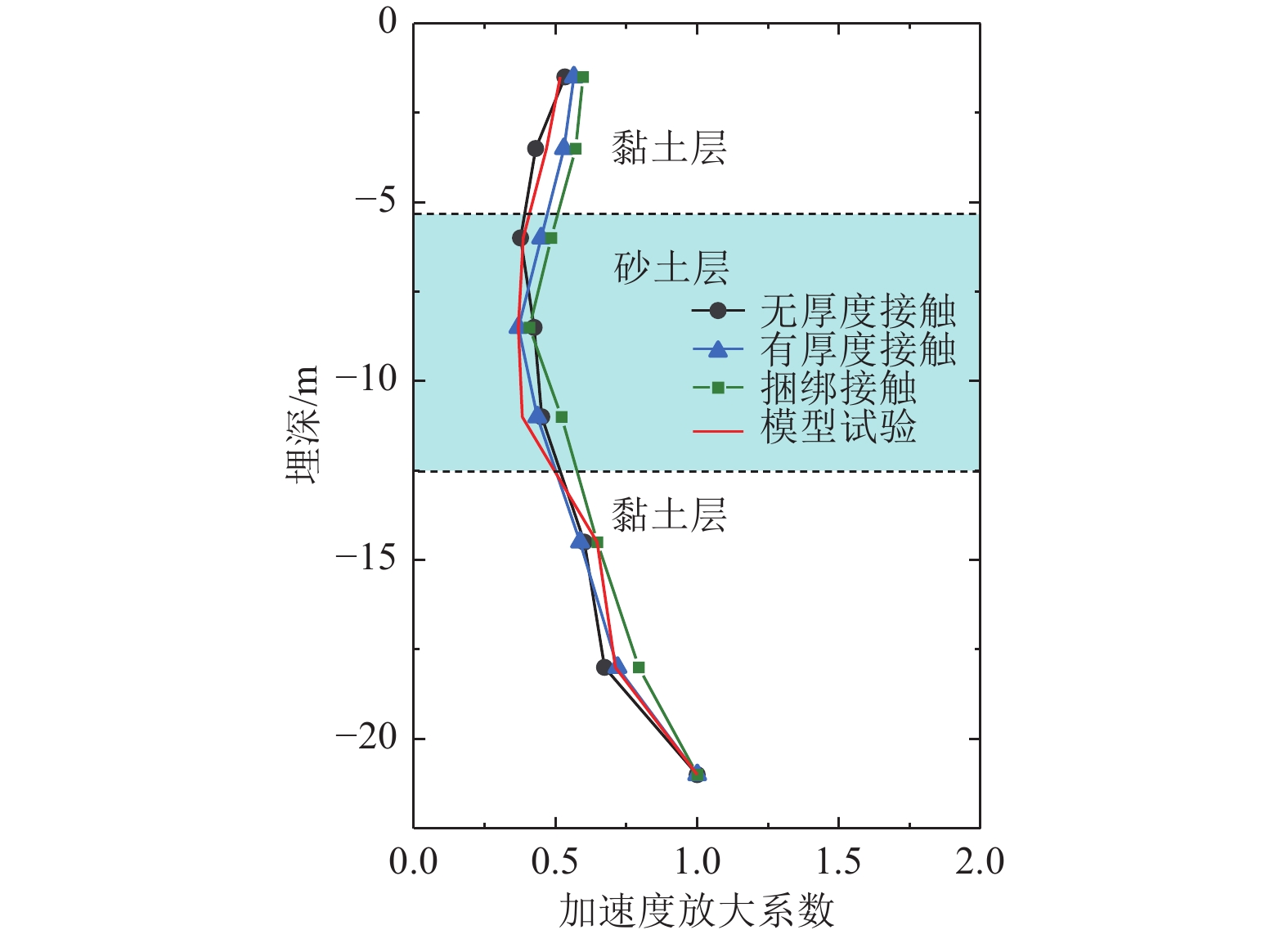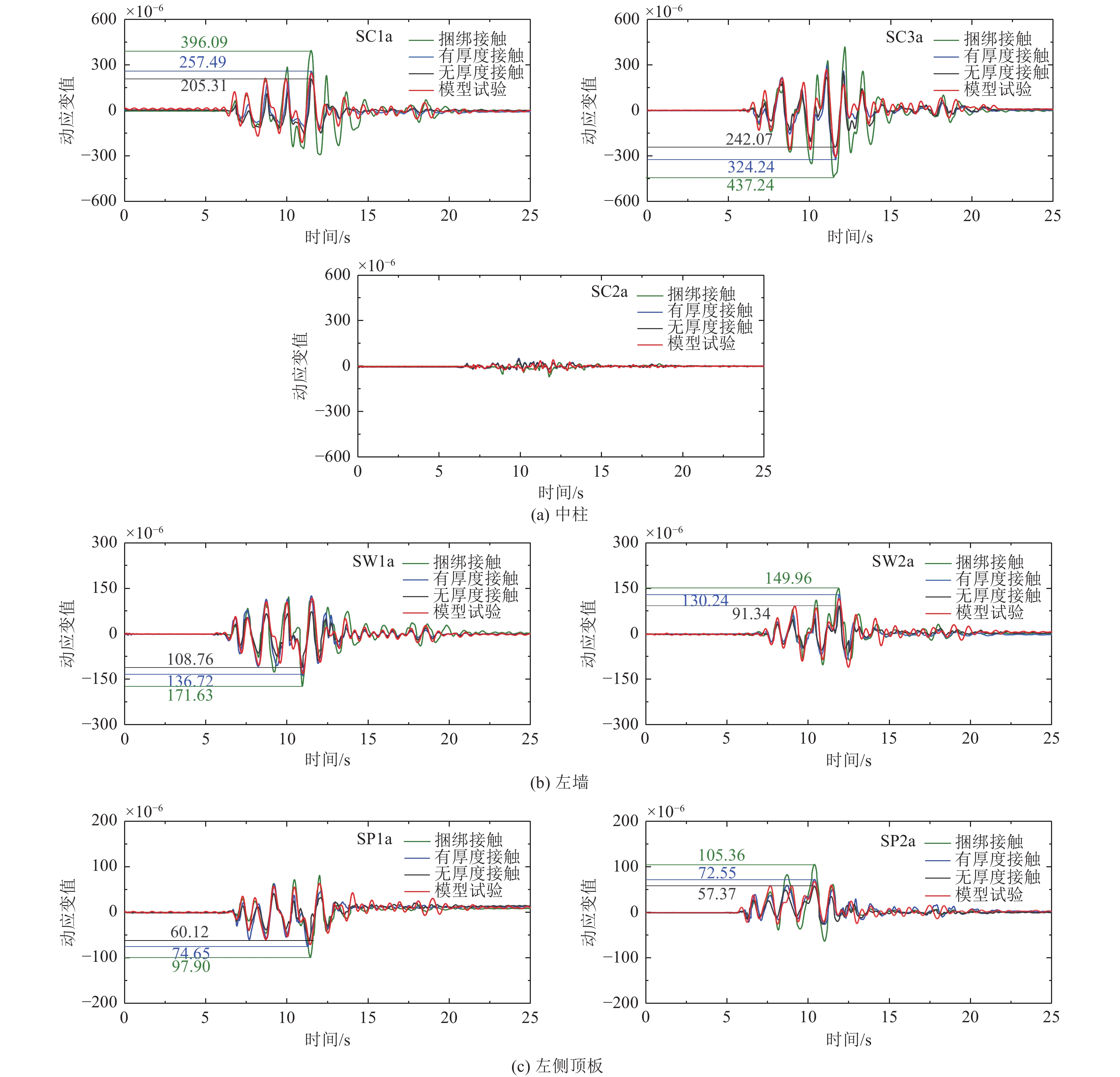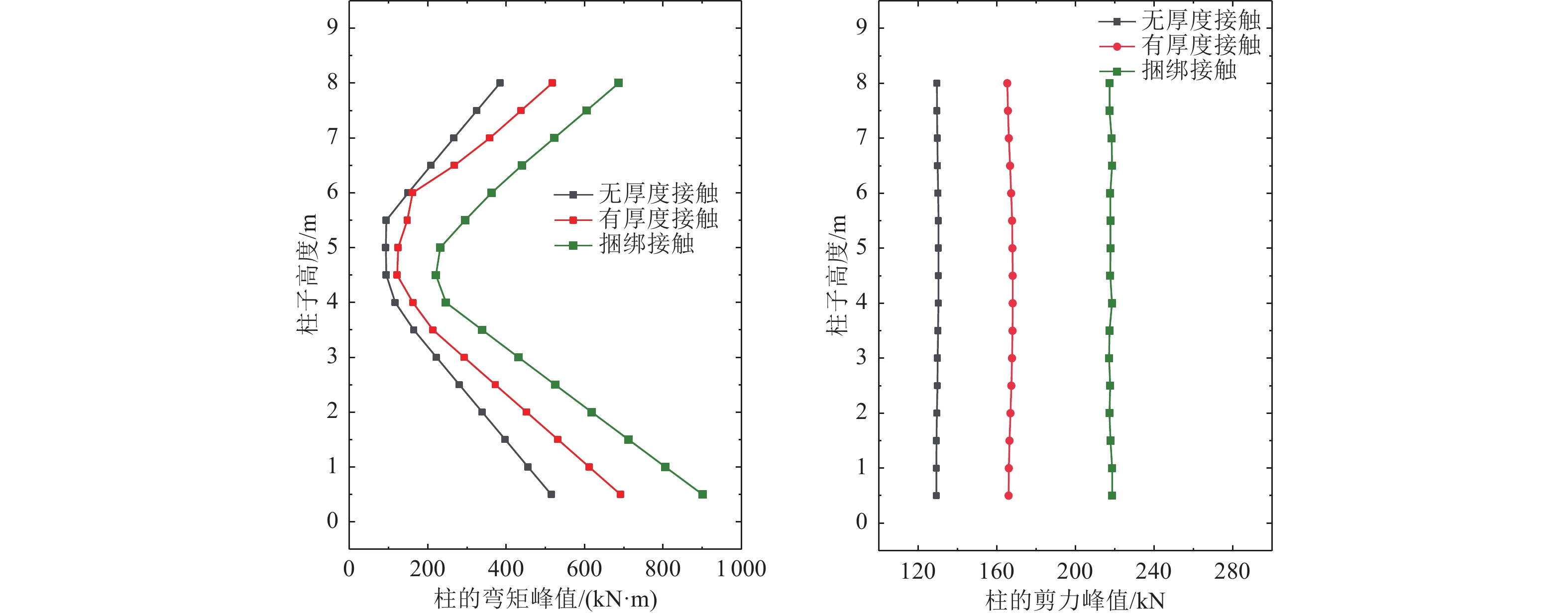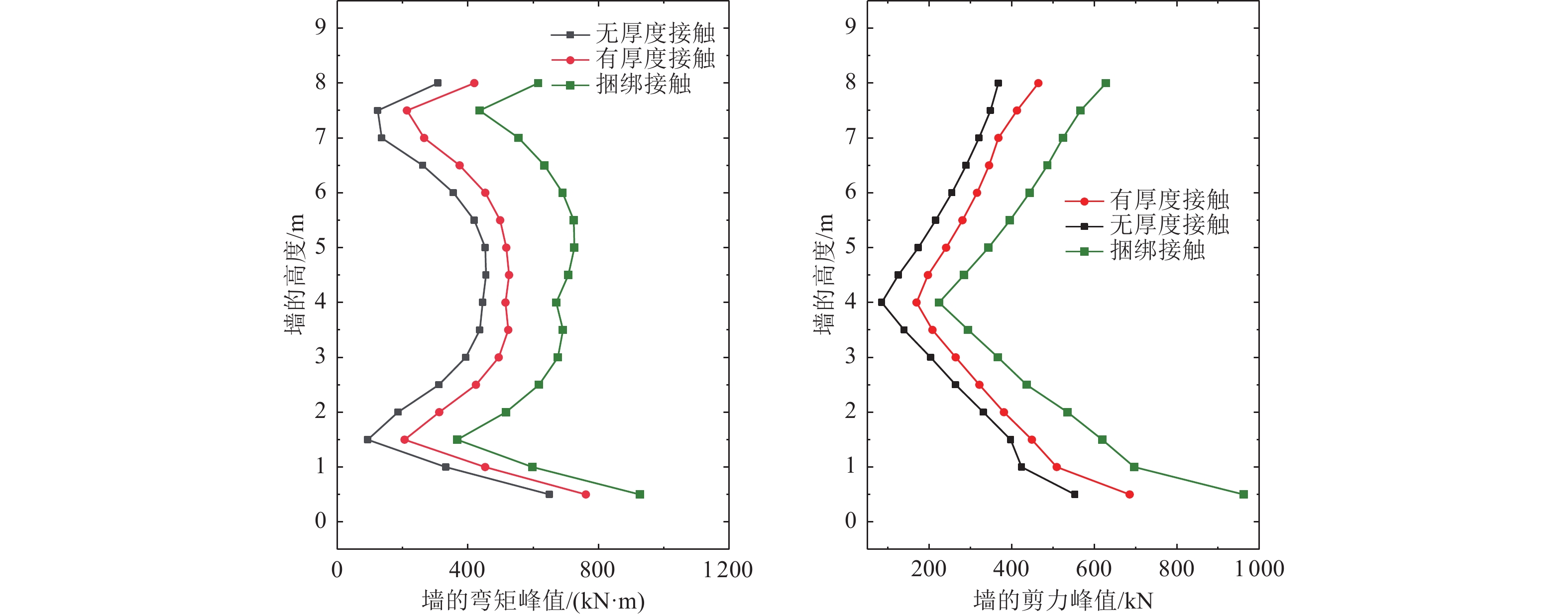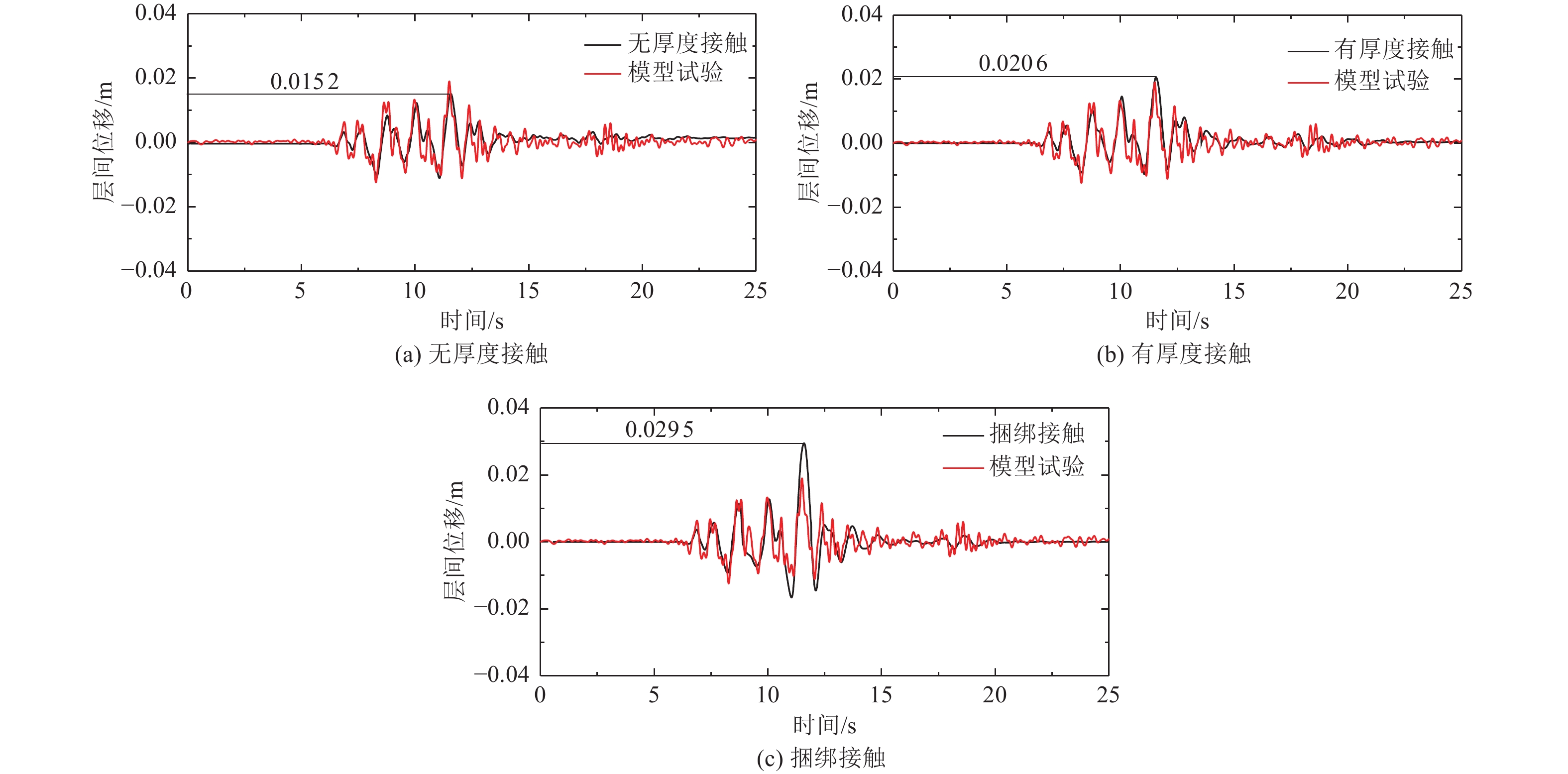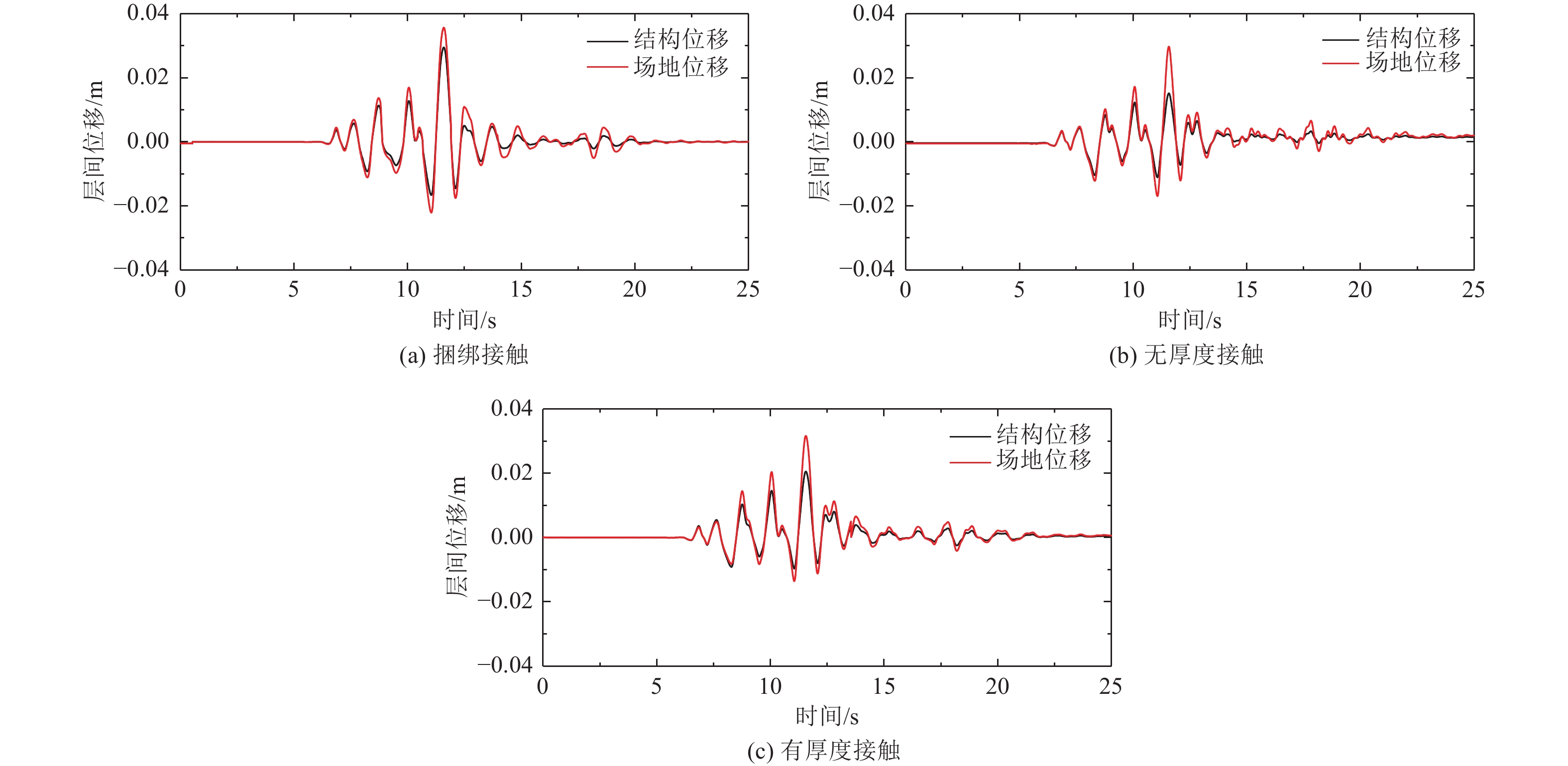Influence of Different Soil-structure Interface Model on Seismic Response of Structure in the Liquefaction Interlayer Site
-
摘要: 为研究不同土-结构接触模型对地下结构地震响应的影响,本文基于已开展的局部液化夹层场地地下结构离心机振动台模型试验建立计算模型,计算模型采用了3种不同的土-结构接触形式,分别是捆绑接触、无厚度的摩擦接触单元和有厚度的薄层接触单元。通过对比试验结果,验证了计算模型的合理性,并分析3种不同接触形式对场地、结构地震响应的影响,得出最合理的土-结构接触形式。结果表明,在液化夹层场地中,不同土-结构接触模型对场地地震响应不产生显著影响,而对结构地震响应产生明显的影响,土-结构捆绑接触会明显放大结构的地震响应,无厚度的摩擦接触会减弱地下结构的地震响应,有厚度的薄层接触单元会放大地下结构的地震响应。模型试验结果相比与采用有厚度的薄层单元的结构地震响应更加接近,能够更好地还原地下结构在液化夹层场地中的地震响应。Abstract: In order to study the influence of different soil structure interface models on the seismic response of underground structures, this paper establishes a computational model based on the centrifuge shaking table test platform of the underground structure in the local liquefaction interlayer site. Three different soil-structure interface models are incorporated: (1) a binding soil-structure interface, (2) a friction interface element without thickness, and (3) a thin-layer interface element with thickness. By comparing the numerical results with experimental data, the validity of the computational model is assessed, and the influence of different interface types on seismic site and structural responses is examined to determine the most suitable interface representation. The findings indicate that while different soil-structure interface models have minimal impact on the site seismic response, they significantly influence the structural seismic response. The binding soil-structure interface substantially amplifies structural seismic response, whereas the friction interface without thickness reduces it. The thin-layer interface element with thickness also amplifies the seismic response but provides results that closely match the experimental data. Therefore, this interface type is recommended for accurately simulating the seismic response of underground structures in liquefied interlayer sites.
-
表 1 离心机振动台试验相似比
Table 1. Centrifuge scaling laws
物理量 模型/原型 物理量 模型/原型 几何尺寸l 1/55 力F 1/552 质量密度ρ 1 输入振动时间t 1/55 弹性模量E 1 渗透时间t1 1/552 质量m 1/553 动力反应线位移u 1/55 抗弯刚度 1/554 动力反应速度v 1 抗压刚度 1/552 动力反应加速度A 55 渗透系数k 55 动力反应应变ε 1 场地加速度g 55 表 3 混凝土材料参数
Table 3. Material parameters of concrete
抗压强度 极限抗压强度 峰值应变 弹性模量 混凝土 16.3 MPa 8.15 MPa 1915×10-6 13 GPa 表 2 土体材料参数
Table 2. Soil material parameters
参数 顶部黏土层 底部黏土层(上层/下层) 砂土层 质量密度ρ/(kg/m3) 1.55×103 1.75×103 1.9×103 参考剪切模量Gr/ MPa 25 51/56 49 参考体积模量Br /MPa 81 164/184 119 八面体剪应变γmax 0.1 0.1 0.1 压力相关系数d 0 0 0.5 参考围压/kPa 100 100 101 屈服面数 20 20 20 黏聚力c/ kPa 30 30 — 摩擦角Φ 0° 0° 31° 剪胀角ΦPT — — 25.5 剪缩参数C1 — — 0.045 剪缩参数C3 — — 0.15 剪胀参数D1 — — 0.06 剪胀参数D3 — — 0.15 孔隙比e — — 0.78 表 4 钢筋材料参数
Table 4. Material parameters of reinforcement
弹性模量 屈服强度 硬变硬化率 钢筋 200 GPa 335 MPa 0.00001 -
陈慧远,1985. 摩擦接触单元及其分析方法. 水利学报,(4):44−50. doi: 10.3321/j.issn:0559-9350.1985.04.006 陈韧韧,2018. 可液化地层中地下结构地震响应的基本规律与分析方法. 北京:清华大学.Chen R. R., 2018. Underground structures in liquafiable ground:seismic response and numerical analysis method. Beijing:Tsinghua University. (in Chinese) 陈文化,张弥,2006. 广州地铁砂土层液化判别. 土木工程学报,39(3):118−122. doi: 10.3321/j.issn:1000-131X.2006.03.019Chen W. H., Zhang M., 2006. Evaluation of seismic liquefaction of sandy soils for Guangzhou metro. China Civil Engineering Journal, 39(3): 118−122. (in Chinese) doi: 10.3321/j.issn:1000-131X.2006.03.019 董景刚,2011. 土与结构接触面力学特性研究. 大连:大连理工大学.Dong J. G., 2011. Study on mechanical properties of interface between soil and structure. Dalian:Dalian University of Technology. (in Chinese) 董秀竹,2020. 深厚可液化地层中地铁结构的概念设计. 建筑技术开发,47(17):20−21. doi: 10.3969/j.issn.1001-523X.2020.17.010Dong X. Z., 2020. Conceptual design of metro structure in deep and thick liquefiable soil layer. Building Technology Development, 47(17): 20−21. (in Chinese) doi: 10.3969/j.issn.1001-523X.2020.17.010 何剑平,2012. 液化场地下结构抗震分析研究. 济南:山东大学.He J. P., 2012. Seismic analysis and study for underground structure in liquefaction field. Jinan:Shandong University. (in Chinese) 蒋清国,2015. 液化地层下地铁工程抗地震液化措施研究. 震灾防御技术,10(1):95−107.Jiang Q. G., 2015. Anti-liquefaction measures for subway engineering in liquefiable soil layers. Technology for Earthquake Disaster Prevention, 10(1): 95−107. (in Chinese) 孔宪京,刘京茂,邹德高等,2021. 土–界面–结构体系计算模型研究进展. 岩土工程学报,43(3):397−405. doi: 10.11779/CJGE202103001Kong X. J., Liu J. M., Zou D. G., et al., 2021. State-of-the-art: computational model for soil-interface-structure system. Chinese Journal of Geotechnical Engineering, 43(3): 397−405. (in Chinese) doi: 10.11779/CJGE202103001 孔祥安,江晓禹,金雪松,1999. 固体接触力学. 北京:中国铁道出版社. 刘春晓,陶连金,边金等,2017. 可液化土层的位置对土层-地下结构地震反应的影响. 湖南大学学报(自然科学版),44(5):143−156.Liu C. X., Tao L. J., Bian J., et al., 2017. Research on seismic response of the soil and underground structure caused by liquefiable soil in different positions. Journal of Hunan University (Natural Sciences), 44(5): 143−156. (in Chinese) 刘春晓,陶连金,边金等,2018. 可液化土层对地下结构地震反应的影响研究. 铁道标准设计,62(2):133−139.Liu C. X., Tao L. J., Bian J., et al., 2018. Research on influence of liquefiable soil on seismic response of underground structure. Railway Standard Design, 62(2): 133−139. (in Chinese) 刘莹骏,2014. 土−结构薄层接触单元的开发及其应用. 大连:大连理工大学.Liu Y. J., 2014. Implementation and application of thin-layer solid element for soil-structure interaction. Dalian:Dalian University of Technology. (in Chinese) 路德春,王欣,罗磊等,2017. 土与结构接触特性对地下结构地震反应的影响研究. 防灾减灾工程学报,37(2):177−186.Lu D. C., Wang X., Luo L., et al., 2017. Research on the seismic responses of underground structures considering the soil and structure contact. Journal of Disaster Prevention and Mitigation Engineering, 37(2): 177−186. (in Chinese) 谭丁,姜忻良,2003. 不同接触面模型对评估地下结构震害的影响. 岩土工程技术,17(2):77−80,111. doi: 10.3969/j.issn.1007-2993.2003.02.006Tan D., Jiang X. L., 2003. Influence of different soil-structure interaction model on the underground structure during the earthquake. Geotechnical Engineering Technique, 17(2): 77−80,111. (in Chinese) doi: 10.3969/j.issn.1007-2993.2003.02.006 唐军平,李建强,孙双祥等,2017. 佛山市城市轨道交通二号线南庄站砂土液化分析及处理措施. 路基工程,(1):189−193,212.Tang J. P., Li J. Q., Sun S. X., et al., 2017. Analysis of sand liquefaction at Nanzhuang station of Foshan urban rail transit line 2 and treatment measure. Subgrade Engineering, (1): 189−193,212. (in Chinese) 王勖成,2003. 有限单元法. 北京:清华大学出版社.Wang X. C., 2003. Finite element method. Beijing:Tsinghua University Press. (in Chinese) 杨建培,2018. 考虑土-结构动力接触效应的地铁车站抗震时程分析. 厦门:厦门大学.Yang J. P., 2018. Seismic time-history analysis of subway station considering the dynamic contact effect of soil-structure. Xiamen:Xiamen University. (in Chinese) 殷宗泽,朱泓,许国华,1994. 土与结构材料接触面的变形及其数学模拟. 岩土工程学报,16(3):14−22. doi: 10.3321/j.issn:1000-4548.1994.03.002Yin Z. Z., Zhu H., Xu G. H., 1994. Numerical simulation of the deformation in the interface between soil and structural material. Chinese Journal of Geotechnical Engineering, 16(3): 14−22. (in Chinese) doi: 10.3321/j.issn:1000-4548.1994.03.002 张梓鸿,许成顺,闫冠宇等,2022. 液化夹层场地地铁车站结构离心机振动台试验方案设计. 岩土工程学报,44(5):879−888. doi: 10.11779/CJGE202205011Zhang Z. H., Xu C. S., Yan G. Y., et al., 2022. Experimental design for dynamic centrifuge tests on a subway station structure in liquefied interlayer site. Chinese Journal of Geotechnical Engineering, 44(5): 879−888. (in Chinese) doi: 10.11779/CJGE202205011 赵联桢,杨平,刘成,2012. 土与结构接触面行为研究综述. 交通科技,22(5):83−87. doi: 10.3963/j.issn.1671-7570.2012.05.029Zhao L. Z., Yang P., Liu C., 2012. Study review of soil-structure interface behavior. Transportation Science & Technology, 22(5): 83−87. (in Chinese) doi: 10.3963/j.issn.1671-7570.2012.05.029 赵龙,2016. 强震作用下地下结构与土动接触效应的研究. 哈尔滨:中国地震局工程力学研究所.Zhao L., 2016. Study of dynamic interaction between underground structure and soil subject to strong earthquake. Harbin:Institute of Engineering Mechanics,China Earthquake Administration. (in Chinese) 庄海洋,程绍革,陈国兴,2008. 阪神地震中大开地铁车站震害机制数值仿真分析. 岩土力学,29(1):245−250. doi: 10.3969/j.issn.1000-7598.2008.01.046Zhuang H. Y., Cheng S. G., Chen G. X., 2008. Numerical simulation and analysis of earthquake damages of Dakai metro station caused by Kobe earthquake. Rock and Soil Mechanics, 29(1): 245−250. (in Chinese) doi: 10.3969/j.issn.1000-7598.2008.01.046 庄海洋,吴滨,陈国兴,2014. 土-大型地铁地下车站结构动力接触效应研究. 防灾减灾工程学报,34(6):678−686.Zhuang H. Y., Wu B., Chen G. X., 2014. Study on dynamic contact properties of soil-subway underground structure interaction system. Journal of Disaster Prevention and Mitigation Engineering, 34(6): 678−686. (in Chinese) Chen S., Tang B. Z., Zhao K., et al., 2020. Seismic response of irregular underground structures under adverse soil conditions using shaking table tests. Tunnelling and Underground Space Technology, 95: 103145. doi: 10.1016/j.tust.2019.103145 Desai C. S., Zaman M. M., Lightner J. G., et al., 1984. Thin‐layer element for interfaces and joints. International Journal for Numerical and Analytical Methods in Geomechanics, 8(1): 19−43. doi: 10.1002/nag.1610080103 Goodman R. E., Taylor R. L., Brekke T. L., 1968. A model for the mechanics of jointed rock. Journal of the Soil Mechanics and Foundations Division, 94(3): 637−659. doi: 10.1061/JSFEAQ.0001133 Hashash Y. M. A., Hook J. J., Schmidt B., et al., 2001. Seismic design and analysis of underground structures. Tunnelling and Underground Space Technology, 16(4): 247−293. doi: 10.1016/S0886-7798(01)00051-7 Huo H., Bobet A., Fernández G., et al., 2005. Load transfer mechanisms between underground structure and surrounding ground: evaluation of the failure of the Daikai Station. Journal of Geotechnical and Geoenvironmental Engineering, 131(12): 1522−1533. doi: 10.1061/(ASCE)1090-0241(2005)131:12(1522) Hussein A. F., El Naggar M. H., 2021. Seismic axial behaviour of pile groups in non-liquefiable and liquefiable soils. Soil Dynamics and Earthquake Engineering, 149: 106853. doi: 10.1016/j.soildyn.2021.106853 Iida H., Hiroto T., Yoshida N., et al., 1996. Damage to Daikai subway station. Soils and Foundations, 36(S1): 283−300. Sharma K. G., Desai C. S., 1992. Analysis and implementation of thin-layer element for interfaces and joints. Journal of Engineering Mechanics, 118(12): 2442−2462. doi: 10.1061/(ASCE)0733-9399(1992)118:12(2442) Wang W. L., Wang T. T., Su J. J., et al., 2001. Assessment of damage in mountain tunnels due to the Taiwan Chi-Chi earthquake. Tunnelling and Underground Space Technology, 16(3): 133−150. doi: 10.1016/S0886-7798(01)00047-5 Wang Z. Z., Gao B., Jiang Y. J., et al., 2009. Investigation and assessment on mountain tunnels and geotechnical damage after the Wenchuan earthquake. Science in China Series E: Technological Sciences, 52(2): 546−558. doi: 10.1007/s11431-009-0054-z Yang Z. H. , Lu J. C. , Elgamal A. , 2008. OpenSees soil models and solid-fluid fully coupled elements: user's manual. San Diego: University of California. Zhou S. H., He C., Guo P. J., et al., 2019. Dynamic response of a segmented tunnel in saturated soil using a 2.5-D FE-BE methodology. Soil Dynamics and Earthquake Engineering, 120: 386−397. doi: 10.1016/j.soildyn.2019.02.017 -



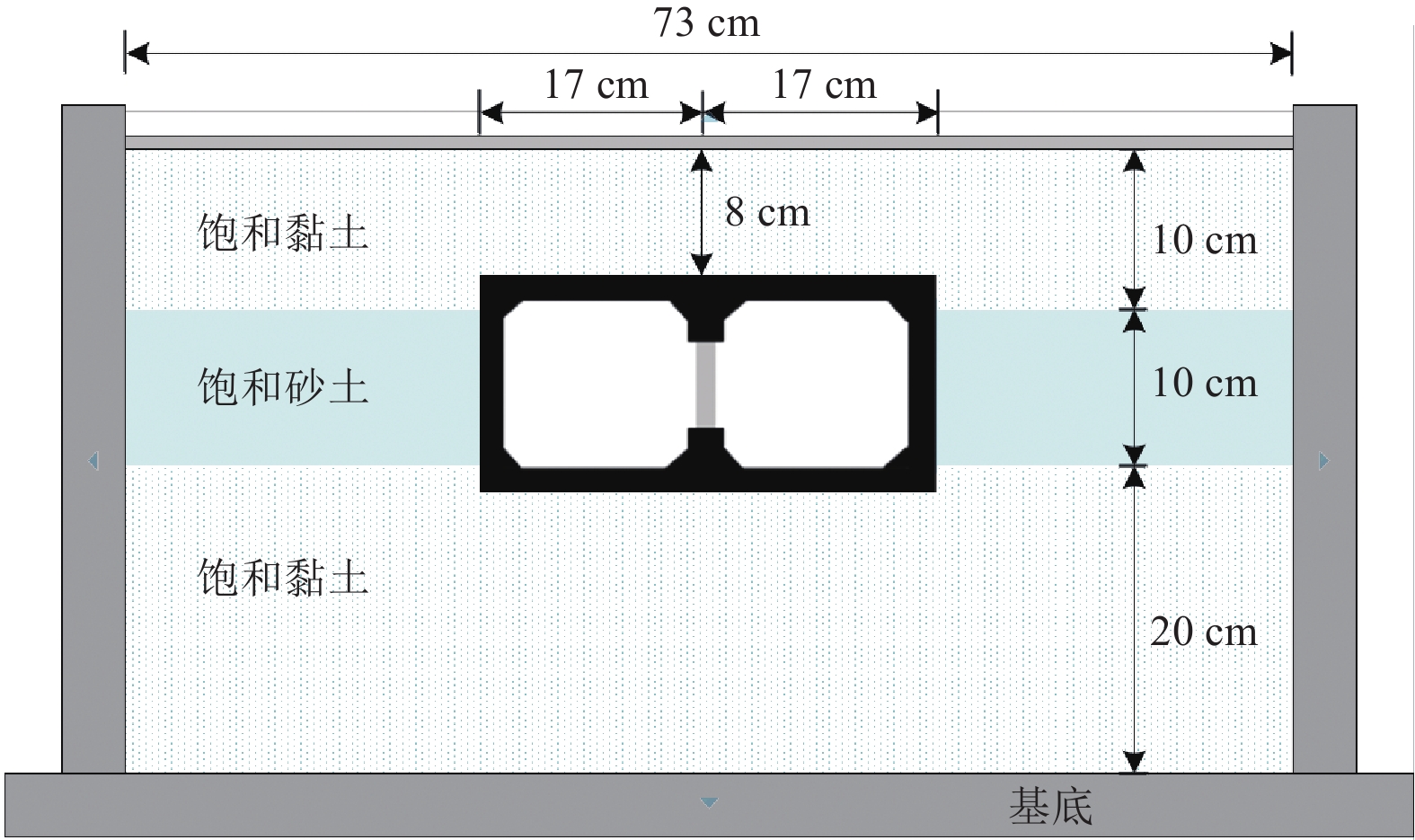
 下载:
下载:

